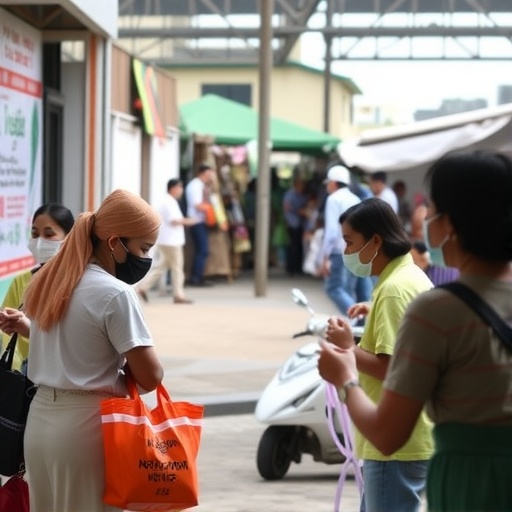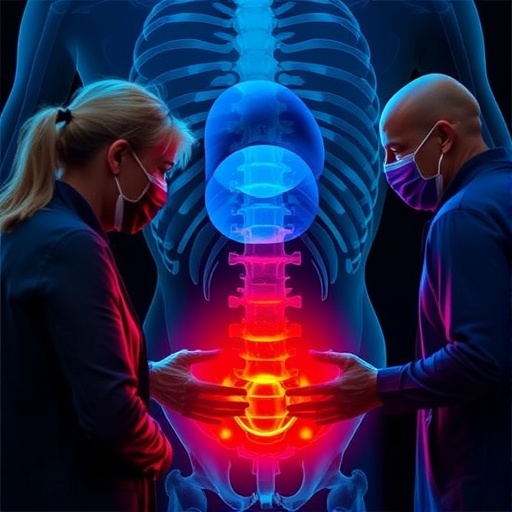In the realm of alternative medicine, the reputation of turmeric—an ancient spice revered for its vibrant golden hue and potential health benefits—has surged in recent years. As a cornerstone of traditional medicine in various cultures, turmeric has been especially noted for its anti-inflammatory properties, largely attributed to its active component, curcumin. A recent systematic review and network meta-analysis led by researchers Wai, H.S., Pathomwichaiwat, T., and Suansanae, T. aims to shed light on the effectiveness of turmeric products in treating knee osteoarthritis, a degenerative joint disease affecting millions worldwide.
Knee osteoarthritis, characterized by the wear and tear of joint cartilage, can lead to significant pain, stiffness, and impairment in mobility. The quest for effective treatments has led many individuals to explore natural alternatives, with turmeric frequently touted as a potential remedy. The review evaluates various turmeric formulations and their clinical outcomes, providing valuable insights into whether these products can effectively alleviate the symptoms associated with this debilitating condition.
The research incorporates a wide array of studies, emphasizing both traditional turmeric preparations and modern supplements. By gathering data from multiple trials, the authors sought to compare the efficacy of different turmeric products against standard treatments and placebo controls. The findings could hold transformative implications for the management of knee osteoarthritis, particularly for those who favor holistic treatments over pharmaceutical options.
Through a sophisticated statistical analysis, the meta-analysis examines the effects of turmeric on pain reduction and functionality in patients suffering from knee osteoarthritis. By integrating data across numerous studies, the authors were able to establish a robust framework for understanding how turmeric may perform relative to conventional interventions. This systematic approach not only enhances the reliability of the results but also supports a more comprehensive understanding of turmeric’s role in osteoarthritis treatment.
The outcomes of the research indicate that certain formulations of turmeric may significantly alleviate pain compared to placebo treatments. Moreover, some variants of turmeric exhibit efficacy comparable to that of standard pharmaceutical treatments. The findings prompt a reevaluation of the place of turmeric products in the clinical management of knee osteoarthritis, particularly for patients seeking more natural alternatives.
An essential aspect of the review delves into the dosages and preparations of turmeric used in the studies. Not all turmeric products are created equal, and the concentration of curcumin—the compound believed to be responsible for many of turmeric’s health benefits—varies considerably across different formulations. As such, the authors emphasize the necessity of standardized dosages in future clinical trials to ascertain which specific preparations yield the best therapeutic results.
The study further highlights the importance of understanding the mechanisms through which curcumin exerts its anti-inflammatory effects. By modulating various signaling pathways, curcumin might inhibit inflammatory responses in the body, thus potentially reducing pain and improving joint function. This biochemical insight not only supports the traditional use of turmeric but also provides a scientific basis for its application in contemporary treatments.
Despite the promising outcomes, the review also addresses the limitations faced by the existing body of research. Several studies included in the analysis had small sample sizes or methodological weaknesses, which might skew the data. Additionally, the heterogeneity of participants’ health statuses poses challenges in generalizing the findings across broader populations. The authors advocate for more rigorous investigations to confirm turmeric’s efficacy and clarify its optimal use in clinical settings.
As the quest for alternative therapies continues, the implications of this review could resonate beyond the realm of osteoarthritis. Other inflammatory conditions might also benefit from similar turmeric interventions, paving the way for further research into this ancient spice’s potential. The authors note a growing trend among patients to seek complementary treatments, indicating a shift in perceptions towards integrated health care options.
The emerging consensus on the efficacy of turmeric products underscores a critical juncture in the intersection of traditional knowledge and modern science. With increasing consumer interest in natural products, healthcare providers are placed in a unique position to guide patients in exploring such options safely and effectively. The study could serve as a catalyst for discussions within clinical environments, compelling physicians to consider evidence-based recommendations on turmeric as part of treatment plans.
Overall, the findings contribute significantly to the ongoing dialogue surrounding osteoarthritis treatment strategies, advocating for informed choices among patients and healthcare professionals alike. As individuals and practitioners navigate the available options for managing knee osteoarthritis, this systematic review provides an encouraging glimpse into the potential of turmeric, urging further exploration into its applications.
Ultimately, the researchers call for continued investigation into turmeric’s multifaceted benefits while also stressing the necessity of thorough research methodologies. Given the widespread availability and use of turmeric products, the pursuit of scientific validation represents a crucial step towards integrating traditional wisdom with contemporary health practices, fostering a future where holistic and evidence-based care coexist harmoniously.
As the knowledge of turmeric’s benefits continues to evolve, patients, healthcare providers, and researchers alike are urged to remain engaged with emerging data and trends. This ongoing discourse has the potential to reshape how we approach not only knee osteoarthritis but a range of inflammatory conditions, making space for ancient remedies within modern medical paradigms.
By pooling data from various clinical trials, the authors of this influential review embark on a journey to dismantle preconceived notions about turmeric and its place in traditional and non-traditional treatment protocols. The findings reaffirm turmeric’s status as a natural warrior against pain, urging further research to validate and expand upon its burgeoning reputation in the medical community.
In conclusion, while the journey into the therapeutic efficacy of turmeric products for knee osteoarthritis is just beginning, this systematic review marks a significant milestone in the ongoing exploration of natural alternatives to conventional medicine. As curiosity around turmeric grows, its potential as a safe and effective treatment option deserves recognition and further inquiry within the scientific community.
Subject of Research: Effect of turmeric products on knee osteoarthritis
Article Title: Effect of turmeric products on knee osteoarthritis: a systematic review and network meta-analysis
Article References:
Wai, H.S., Pathomwichaiwat, T., Suansanae, T. et al. Effect of turmeric products on knee osteoarthritis: a systematic review and network meta-analysis.
BMC Complement Med Ther 25, 292 (2025). https://doi.org/10.1186/s12906-025-05045-z
Image Credits: AI Generated
DOI: 10.1186/s12906-025-05045-z
Keywords: knee osteoarthritis, turmeric, curcumin, systematic review, meta-analysis, alternative medicine, inflammation, pain relief.
Tags: alternative medicine for osteoarthritiscurcumin anti-inflammatory effectsdegenerative joint disease managementherbal treatments for knee painknee osteoarthritis treatmentnatural remedies for joint painnetwork meta-analysis on turmeric productssystematic review on turmericturmeric and mobility improvementturmeric formulations effectivenessturmeric health benefitsturmeric supplements clinical outcomes





